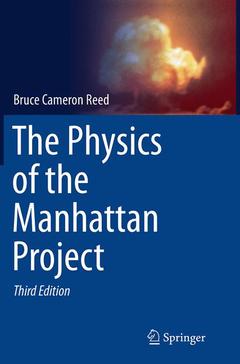Description
The Physics of the Manhattan Project (3rd Ed., Softcover reprint of the original 3rd ed. 2015)
Author: Reed Bruce Cameron
Language: English
Subject for The Physics of the Manhattan Project:
Approximative price 73.84 €
In Print (Delivery period: 15 days).
Add to cartSupport: Print on demand
Description
/li>Contents
/li>Biography
/li>Comment
/li>
The development of nuclear weapons during the Manhattan Project is one of the most significant scientific events of the twentieth century. This revised and updated 3rd edition explores the challenges that faced the scientists and engineers of the Manhattan Project. It gives a clear introduction to fission weapons at the level of an upper-year undergraduate physics student by examining the details of nuclear reactions, their energy release, analytic and numerical models of the fission process, how critical masses can be estimated, how fissile materials are produced, and what factors complicate bomb design. An extensive list of references and a number of exercises for self-study are included. Links are given to several freely-available spread sheets which users can use to run many of the calculations for themselves.
Cameron Reed is the Charles A. Dana Professor of Physics at Alma College, where he has been a faculty member since 1992. His teaching experience includes the full spectrum of undergraduate physics classes from freshman-level mechanics to senior-level quantum mechanics. His research interests address primarily the history and physics of nuclear weapons; in 2009 he was elected as a Fellow of the American Physical Society for his contributions to the history and physics of the Manhattan Project. He has also worked extensively on galactic structure (hot, blue stars). In addition to the present book, he has published two textbooks and over 100 papers in peer-reviewed physics and astronomy journals.
Gathers together all relevant and quite diverse physics of the atom-bomb project in a single volume
Retells the challenges of the Manhattan project, with the skill of a dedicated teacher of physics
Appendices provide numerous useful data-tables and special tools of calculation
A unique blend of history and physics
Third edition includes four new sections and is carefully revised throughout
Includes supplementary material: sn.pub/extras

